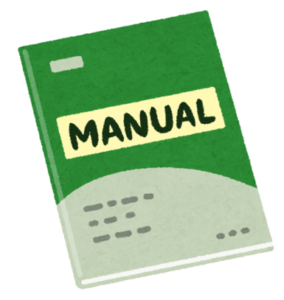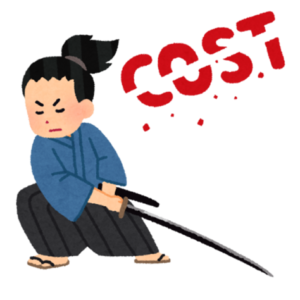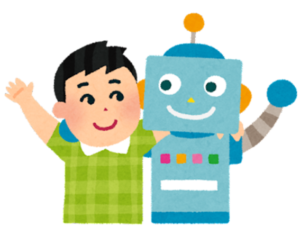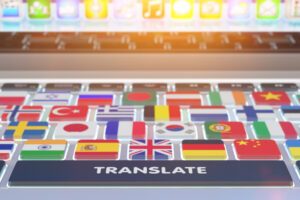Note: This blog post was originally written in Japanese for our Japanese website. We used our machine translation platform Translation Designer to translate it and post-edit the content in English. The original Japanese post can be found here.
In this post, we will go over the points that could not be covered in Part 1 of this series. We'll discuss whether machine translation can be used for translating manuals from the three perspectives of quality, cost, and delivery time.
If you want to use machine translation to translate manuals, or if you want to know the advantages and disadvantages of using machine translation, this post is for you.
If you haven't already, please check out Part 1 too:
Machine Translation Vs. Human Translation: Translating Manuals Part 1
Now let's get started.
Comparing quality
First, let's look at the quality aspect. Regarding quality, it's easier to understand when you actually see it, so take a look at the example below.
Original text:
| 傾斜面で動かす際は、本機の正面を進行方向にし、転倒しないようにゆっくり動かしてください。 |
Translation (machine translation with post-editing):
| When moving the machine on an inclined surface, make sure that the front of the machine is facing the direction of the movement and move it slowly so that it does not topple over. |
Human translation:
| If moving the machine on an incline, move it slowly keeping the front pointed forward while ensuring that the machine does not tip over. |
What do you think? Compared to human translation, the machine translation with post-editing (MTPE) version may seem a little redundant. However, you probably have felt that the translation was sufficient to understand the content correctly.
Although the readability is better with human translation, considering the advantages in cost and delivery time, the MTPE version is worthwhile. As a side note, at Kawamura International, we can customize the post-editing criteria to improve the quality of the deliverables, depending on the quality level you desire.

Comparing cost
Next, let's look at the cost.
As for the cost, although using machine translation increases the burden of revising the translation, i.e., post-editing, you don't have to translate from scratch and overall costs can be reduced.
Let's say you're a manufacturing company. There are not only large volumes of manuals but also many types of manuals. If you need to translate them into multiple languages, it will incur enormous costs. If your priority is to significantly reduce these huge costs, then using machine translation would be perfect.
User manuals tend to emphasize readability, so using post-editing services may require careful consideration. However, if they are manuals for engineers, ensuring there are no errors in the content is prioritized over readability. In this case, there are many benefits to using machine translation for manuals. The actual effectiveness varies depending on the project, but in one case, costs were reduced by 53% compared to conventional methods.
It's quite dreamy, isn't it? If your current challenge is to reduce costs in translating manuals, you should definitely consider using machine translation.

Comparing delivery time
Finally, let's look at the delivery time.
As for the delivery time, the situation is same to the one with costs. Using machine translation increases the burden of revising the translations, but it eliminates the need to create translations from scratch, so the overall delivery time tends to be shorter.
Of course, the workload of the revising process changes depending on the accuracy of the machine translation output. There are various variables such as containing lots of images (which needs a more careful check), so we can't say with absolute certainty that the turnaround time will be quicker. However, in our experience, in most cases we were able to speed up the turnaround time. In one case, we were able to translate a manual with several thousand pages in about one-fifth of the time required for human translation.
As you can see, the larger the quantity, the larger the effectiveness regarding the speed of turnaround time. On the other hand, if the translation is small, such as a one-pager, the effect of shortening the delivery time may be hard to notice. So, please take that into account in advance. For those who have experienced delays in development schedules due to increased translation workload, we recommend considering the use of machine translation as a way to shorten the delivery time.

Combining TM, MT, and PE
So far, we have looked at the possibilities of using machine translation for translating manuals from the perspective of quality, cost, and delivery time. We hope it's been helpful. There are probably quite a few people who felt positive about using the machine translation method to translate manuals of your products.
That said, some people may be concerned about the quality and hesitate to try machine translation. Although this is not a fundamental solution, we would like to conclude this post by sharing a way to improve the quality (and also cost and time efficiency) when using machine translation.
The method is what we have introduced several times before in previous posts. We recommend combining your translation memory (TM) with the machine translation (MT) and post-editing (PE) process. What's good about this method is that it is possible to reuse and refer to translations in your TM for sentences with a high degree of similarity. This can improve quality compared to just working with machine translation on its own. However, please be aware that if the quality of translations in your TM is poor, you will not be able to expect quality improvements as you will be reusing and referencing them.
So, it is a prerequisite that the quality of your TM is good. But in general, adopting this method gives you a chance to utilize your company's translation assets, and that it will lead to optimization of quality, cost, and delivery time.

Summary
This post concludes the two-part series of Machine Translation Vs. Human Translation: Translating Manuals. If you are struggling to optimize your translation quality, cost, and delivery time, why not take this opportunity to consider using machine translation? If you find it difficult to handle this on your own, we can always help you out with the process at Kawamura International. Please feel free to contact us if you have any questions.
Kawamura's translation services
Kawamura International offers various solutions to effectively use machine translation engines. In addition, we developed a platform so that our customers can easily generate a customized engine and make effective use of their language assets.
If you're looking for solutions using machine translation or post-editing work, we would be happy to support you. Reach out to us anytime!
_CMYK_OL.png)

